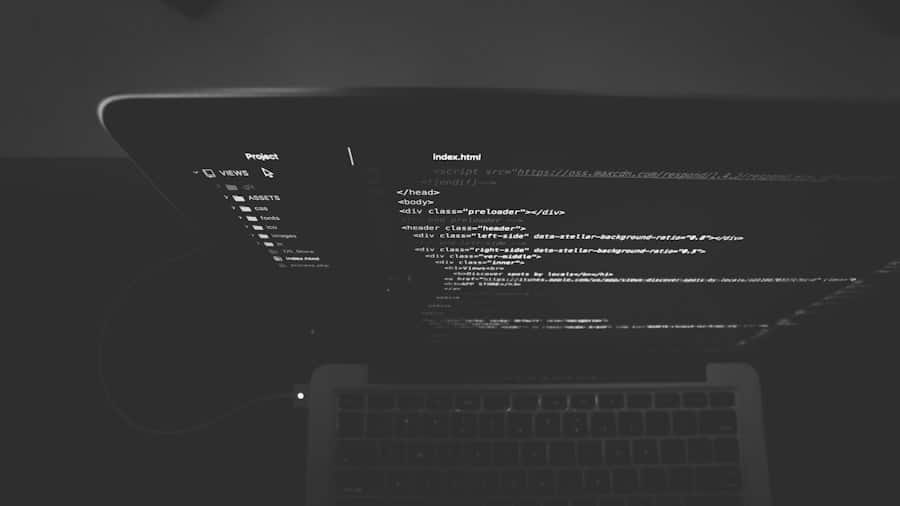In an increasingly fast-paced world, the need for efficiency and productivity has never been more pronounced. Many individuals and organizations are constantly seeking ways to streamline their workflows, reduce manual effort, and minimize human error. One of the most effective solutions to achieve these goals is through automation, particularly using programming languages like Python.
Python has gained immense popularity due to its simplicity, versatility, and a rich ecosystem of libraries that facilitate automation across various domains. From automating mundane tasks such as file management to more complex processes like data analysis and web scraping, Python offers a robust framework for enhancing productivity. The beauty of automating daily tasks with Python lies in its accessibility.
Even those with minimal programming experience can quickly learn the basics and start creating scripts that save time and effort. The language’s clear syntax and extensive documentation make it an ideal choice for beginners and seasoned developers alike. Moreover, the vast community surrounding Python means that there are countless resources available, including tutorials, forums, and libraries specifically designed for automation.
This article will delve into the essential steps for automating daily tasks using Python, providing insights into setting up your environment, identifying tasks suitable for automation, writing scripts, scheduling them, handling errors, and maintaining your automated processes.
Key Takeaways
- Automating daily tasks with Python can save time and reduce human error.
- Setting up a Python environment involves installing Python and a code editor, and understanding virtual environments.
- Identifying repetitive tasks to automate requires analyzing daily workflows and finding patterns.
- Writing and testing Python scripts involves understanding basic syntax, data types, and control structures.
- Scheduling automated tasks can be done using Python’s built-in libraries or third-party tools like cron.
Setting Up Your Python Environment
Before diving into automation, it is crucial to establish a proper Python environment. This involves installing Python on your machine and setting up an Integrated Development Environment (IDE) or code editor that suits your workflow. The official Python website offers installers for various operating systems, including Windows, macOS, and Linux.
Once installed, you can verify the installation by running a simple command in your terminal or command prompt: `python –version`. This command will display the installed version of Python, confirming that the setup was successful. Choosing the right IDE can significantly enhance your coding experience.
Popular options include PyCharm, Visual Studio Code, and Jupyter Notebook. PyCharm is a powerful IDE specifically designed for Python development, offering features like code completion, debugging tools, and version control integration. Visual Studio Code is a lightweight yet versatile editor that supports multiple programming languages and has a rich ecosystem of extensions.
Jupyter Notebook is particularly useful for data analysis and visualization tasks, allowing you to create interactive documents that combine code execution with rich text elements. Regardless of your choice, ensure that your IDE is configured to recognize the Python interpreter and any additional libraries you may need for automation.
Identifying Repetitive Tasks to Automate
The first step in the automation journey is identifying which tasks are repetitive and time-consuming. These tasks often involve manual data entry, file manipulation, or routine reporting that can be tedious and prone to errors when performed by humans. A good starting point is to keep a log of your daily activities for a week or two.
By documenting the tasks you perform regularly, you can pinpoint areas where automation could save time and reduce frustration. Common examples of tasks ripe for automation include data extraction from websites or databases, generating reports from spreadsheets, sending routine emails, or organizing files based on specific criteria. For instance, if you find yourself frequently downloading reports from a web portal and formatting them in Excel, this process can be automated using Python libraries such as `requests` for web scraping and `pandas` for data manipulation.
Similarly, if you regularly send out reminders or updates via email, you can automate this process using the `smtplib` library to send emails programmatically. By focusing on these repetitive tasks, you can free up valuable time to concentrate on more strategic activities.
Writing and Testing Python Scripts
Once you have identified the tasks you want to automate, the next step is to write the corresponding Python scripts. This process begins with breaking down the task into smaller, manageable components. For example, if you are automating a data extraction task from a website, you might start by writing a script that fetches the HTML content of the page using the `requests` library.
After successfully retrieving the content, you can then parse it using `BeautifulSoup` to extract the relevant data. Testing your scripts is an essential part of the development process. It ensures that your code functions as intended and helps identify any bugs or issues before deploying it in a live environment.
You can use print statements or logging to track the flow of your program and verify that each component is working correctly. Additionally, consider implementing unit tests using frameworks like `unittest` or `pytest` to automate the testing process further. These frameworks allow you to write test cases that validate the functionality of your scripts under various conditions, ensuring robustness and reliability.
Scheduling Automated Tasks
After successfully writing and testing your scripts, the next step is to schedule them for execution at specific intervals or times. This is particularly useful for tasks that need to run regularly without manual intervention. On Windows systems, you can use Task Scheduler to set up automated tasks by specifying when and how often your script should run.
For instance, if you have a script that generates weekly reports every Monday at 9 AM, you can configure Task Scheduler to execute it automatically at that time. On Unix-based systems like Linux or macOS, you can utilize `cron`, a time-based job scheduler that allows you to run scripts at specified intervals.
For example, a cron job entry like `0 9 * * 1 /usr/bin/python3 /path/to/your/script.py` would run your script every Monday at 9 AM. Scheduling automated tasks not only saves time but also ensures consistency in executing routine processes.
Handling Errors and Exceptions
As with any programming endeavor, errors and exceptions are inevitable when automating tasks with Python. It is crucial to implement robust error handling mechanisms within your scripts to ensure they can gracefully handle unexpected situations without crashing or producing incorrect results. Python provides several built-in exceptions that can be caught using try-except blocks.
Logging is another essential aspect of error handling in automated scripts. By incorporating logging functionality using the `logging` module, you can capture detailed information about errors as they occur during execution.
This information can be invaluable for debugging purposes and helps maintain transparency in automated processes. For example, if an error occurs while fetching data from an API due to network issues, logging the error message along with a timestamp allows you to trace back what went wrong and when it happened.
Monitoring and Maintaining Automated Processes
Once your automated tasks are up and running, ongoing monitoring and maintenance become critical to ensure their continued effectiveness. Regularly reviewing logs generated by your scripts can help identify any anomalies or failures that may arise during execution. Setting up alerts or notifications for critical errors can also provide timely insights into issues that require immediate attention.
Additionally, as external factors change—such as updates to APIs or changes in website structures—your automation scripts may need adjustments to remain functional. Periodically revisiting your codebase allows you to make necessary updates and optimizations based on evolving requirements or improvements in technology. For instance, if a website you scrape changes its layout or structure, you will need to modify your parsing logic accordingly to ensure accurate data extraction.
Scaling Automation with Python Libraries and Frameworks
As your automation needs grow more complex or diverse, leveraging specialized Python libraries and frameworks can significantly enhance your capabilities. Libraries such as `Selenium` allow for browser automation by simulating user interactions with web applications—ideal for testing web applications or scraping dynamic content generated by JavaScript. Similarly, `Scrapy` is a powerful framework designed specifically for web scraping projects that require handling multiple pages efficiently.
For data manipulation and analysis tasks, `pandas` provides an extensive set of tools for working with structured data in tabular form. It allows for easy data cleaning, transformation, and analysis—making it an invaluable resource for automating reporting processes or data-driven decision-making tasks. Additionally, if you’re working with APIs extensively, libraries like `Requests` simplify HTTP requests while handling authentication and session management seamlessly.
In conclusion, automating daily tasks with Python opens up a world of possibilities for enhancing productivity and efficiency across various domains. By setting up a proper environment, identifying repetitive tasks, writing robust scripts, scheduling them effectively, handling errors gracefully, monitoring processes diligently, and leveraging powerful libraries and frameworks, individuals and organizations can harness the full potential of automation in their workflows.
If you’re interested in learning more about digital marketing trends for 2023, check out this article that highlights the top trends to watch out for. Understanding these trends can help you stay ahead of the curve and make informed decisions when automating your daily tasks with Python.
FAQs
What is Python?
Python is a high-level programming language known for its simplicity and readability. It is widely used for web development, data analysis, artificial intelligence, and automation.
What are daily tasks that can be automated with Python?
Python can be used to automate a wide range of daily tasks, such as file management, data processing, web scraping, sending emails, and scheduling repetitive tasks.
How can Python be used to automate daily tasks?
Python can be used to automate daily tasks by writing scripts or programs that perform the tasks automatically. This can be achieved by using libraries and modules such as os, shutil, pandas, requests, and smtplib.
What are the benefits of automating daily tasks with Python?
Automating daily tasks with Python can save time, reduce errors, increase productivity, and allow for more efficient use of resources. It can also free up time for more important or creative work.
What are the steps to automate daily tasks with Python?
The steps to automate daily tasks with Python include identifying the tasks to be automated, breaking down the tasks into smaller steps, writing Python scripts or programs to perform the tasks, testing the automation, and integrating the automation into daily workflows.
Are there any resources available to learn Python for automation?
Yes, there are many resources available to learn Python for automation, including online tutorials, books, courses, and documentation. Additionally, there are communities and forums where individuals can seek help and guidance.



